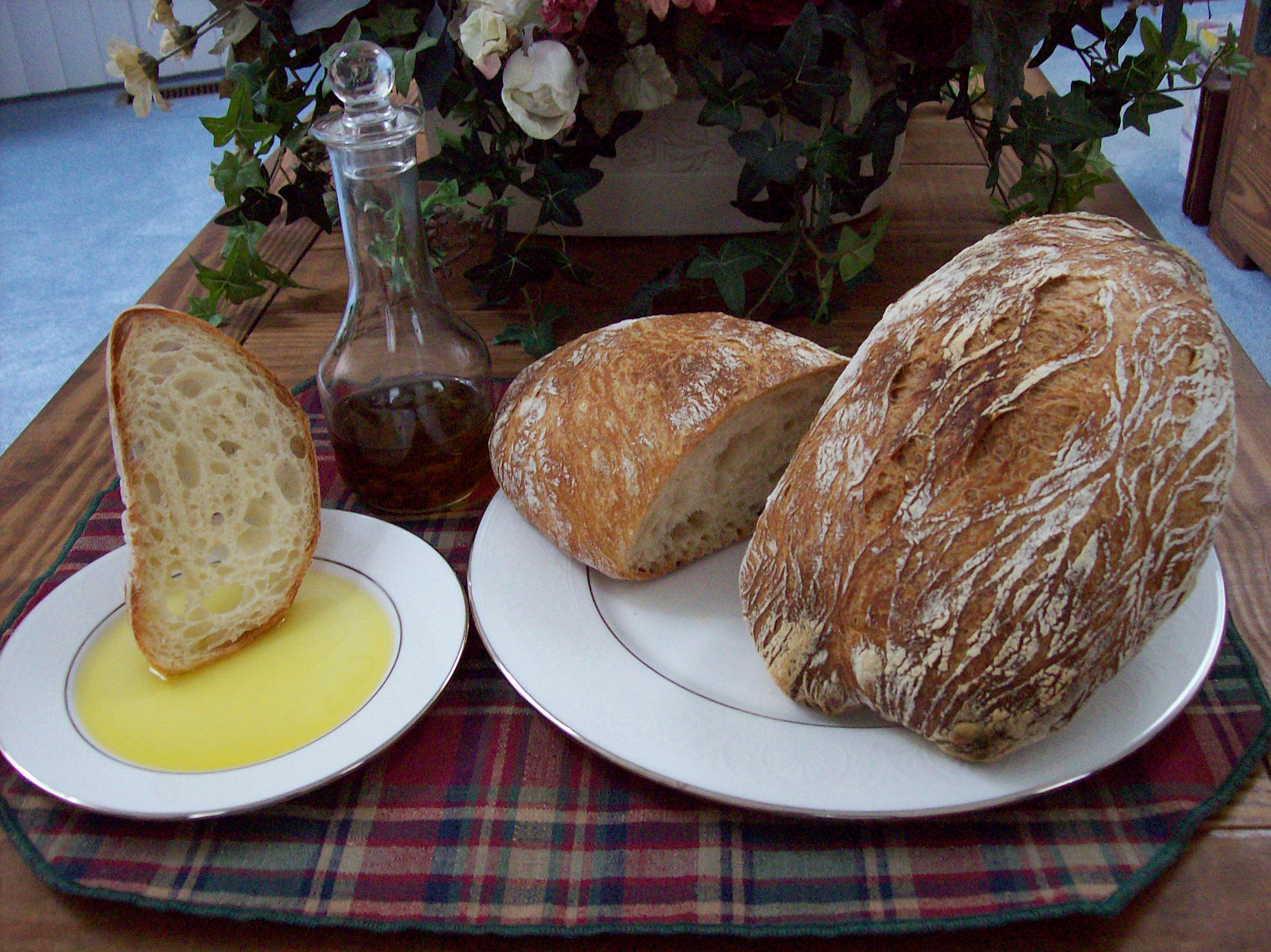Ciabatta using Double Hydration
Aug 30th, 2008 by SteveB
Here in the U.S., ciabatta has become the quintessential Italian bread. Characterized by a crisp, flour-dusted crust, a holey interior and a rustic, “slipper-like” shape, ciabatta is ideal for dipping into any one of a number of wonderfully aromatic, herb-infused olive oils. When sliced horizontally, it also makes great sandwiches, the holey crumb providing deep pockets to hold a favorite condiment or dressing.
Ciabatta is made from a high hydration dough, typically upwards of 70%. The formula used here has a hydration of 76%. Although I am a huge proponent of hand mixing because of its ability to provide superior gluten development over conventional home stand mixers, very high hydration doughs can be difficult to properly mix by hand. Because of this, I decided to see how the technique of “double hydration” would work for hand mixing. In double hydration, the dough is first mixed with only enough water to bring it into the range of a conventional hydration (e.g. 60-69%). After the gluten has been sufficiently developed, the remaining water is added and mixing is continued until full incorporation of the added water. In this way, the more difficult process of sufficiently developing gluten in a very wet dough can be avoided.
The formula and procedure described below has been adapted from Advanced Bread and Pastry: A Professional Approach by Michel Suas.
Poolish
- 190 g Heartland Mill All-Purpose Flour
- 190 g Water
- 1/8 tsp. Instant Yeast
Final Dough
- 310 g Heartland Mill All-Purpose Flour
- 190 g Water
- 10 g Salt
- 1/8 Tsp. Instant Yeast
- 15 g Olive Oil
- 380 g (all of the above) Poolish
The night before baking, the poolish is made by mixing the flour, water and yeast until all the ingredients are well incorporated. The poolish is then covered with plastic wrap and allowed to sit at room temperature overnight until mature, about 12 hours.
The next day, all of the poolish is added to only 140 g of the full 190 g of water (the remaining 50 g of water is set aside for later use). The olive oil is then added and a whisk is used to obtain a homogeneous mixture. The flour, yeast and salt are then added and the mixture is stirred with a dough whisk until all the flour is hydrated. The resulting mixture is turned out onto a mixing suface and the dough mixed by hand (Musings on Mixing…) until moderate gluten development, about 10 minutes. The dough is then placed back in its mixing bowl and the remaining 50 g of water are added. The water is incorporated by using a hand to continually fold the dough over on itself. This took an additional 5-10 minutes. The resulting very fluid dough was then poured into an oiled container, covered and allowed to ferment for 3 hours. During this time, the dough was folded at the 1 and 2 hour marks using the procedure shown on the video here.
After the 3 hours are up, the dough is turned out onto a well-floured surface and is divided in half. Each dough piece is then given a half fold (left to center, then right to center), placed folded side up on a well-floured couche and covered. After a 40 minute second fermentation, the dough pieces are gently flipped onto a peel and loaded into an oven pre-heated to 450°F. The pieces are baked at 450°F for 35 minutes, under steam for the first 15 minutes of baking.

dear steve,
hi.
finally i found suitable flour for ciabatta bread and made it.
result was two beautiful loaves with nice open crumb ( open as a mouse hole 😀 ).
thank you for your kind help and for your beautiful website
[…] from the website Bread Cetera, the following adjustments were made to the original […]
maigrir
Ciabatta en utilisant Double Hydratation | Pain cetera